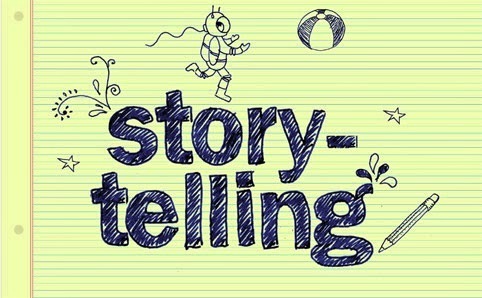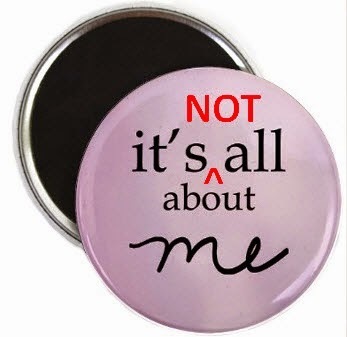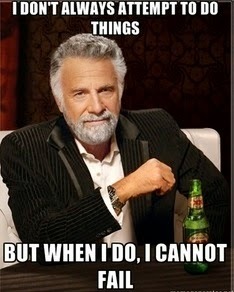Joshua Rivedal's Blog, page 2
June 14, 2019
Term papers for any grade
If you are a student whose life is boiling rapidly, you can always order course paper online. The price of paperwork depends on the volume, the complexity of the subject and the deadline, therefore it is determined individually. Ask questions and get detailed information from the manager of cheap term paper writing service. Relevance of […]
The post Term papers for any grade appeared first on Blogospelijosh Writing Service .
Keep calm and order an essay
Essay as a paper type is distinguished by a high level of originality, the expressed author’s position, the ability to formulate his own point of view on the analyzed problem. It should be borne in mind that the author of the essay should understand the topic not superficially, but be prepared to demonstrate in a […]
The post Keep calm and order an essay appeared first on Blogospelijosh Writing Service .
Essays for various subject by professionals
An essay is a special kind of creative task. Despite its seemingly small amount, it requires much more time and effort than, for example, the average size of the abstract. Very often these two concepts are confused. Inexperienced students, getting an essay preparation as an independent task, mistakenly believe that it is much easier to […]
The post Essays for various subject by professionals appeared first on Blogospelijosh Writing Service .
December 11, 2014
Why Storytelling is So Important for: Speeches, Breaking Down Stigma, and Civil Rights

Whenever I’m feeling particularly uninspired or low, one of my favorite activities is to read the biography of someone famous and look for the part of their life story where they struggled. I find that I learn a lot more from a person’s low points (mine included) than their highlight reel of achievements. “If that woman can overcome her paraplegia to become a famous painter by using her teeth, then holy cow, I can do anything.” “That guy lost his wife and daughter in a car accident, fell into tremendous grief, rebounded and eventually found love again and became the Vice President of the United States—then, snap, I can keep fighting on too.”When people give of themselves through the telling of their stories it makes the impossible in our lives tangible and attainable.
Stories Break Down Stigma
The world becomes smaller. “That black guy,” “that lesbian-chick,” “that snarky-writer-guy who talks about suicide;” they all now have a name. David. Jamie. Josh. Each of these people has wants and needs, to live, to love, to survive and thrive… just like every other human being. Each person’s story displays its own beauty and with each the storyteller has the opportunity to uncover a piece of themselves—and by doing so they allow us to peel back and examine a layer of our own soul.
Stories are a Demand for our Civil rights.
Once stigma is broken down because of the courage of the “abnormal” person telling their story, they are now viewed as a human being—they now have a seat at the proverbial table of equality. Jim Crow is repealed. Women’s suffrage is enacted. Mental health laws are passed that empower and aid people with illnesses rather than traumatizing or criminalizing them.
That’s the kind of world that I want to live in.
December 4, 2014
Make it All Work Together

You have a million good ideas—whether they’re for homemaking, business, vacation, or anything in between—and maybe several great ideas… but realistically there is no way in the world you’ll be able to give your full attention to each one.
Instead of going from idea to idea, it would be worth figuring out how to make two or more of your brilliant ideas work together. A three month work vacation in Iceland, slinging martinis? Sweet.An opera themed ice-cream truck? Word up.A living room that converts to a sauna? Rad.A show that integrates music, cartoons, live theatre, and stand up comedy? Boo-yah.Take a moment (okay, several). Breathe. And then think big.
The “impossible” has turned into “i’m possible” thousands of times before throughout world history—why can’t it be you too?
December 2, 2014
The Good News Project: Vol. 36—The Ultimate Consummation of Our Love by Samuel A. Simon
This is the thirty-sixth edition of The Good News Project: A series where anyone can share a personal story of inspiration or an event in life where they overcame tremendous odds. Everyone has a powerful story to tell and something to teach the world. (Here are guidelines on how you can write for The Good News Project.) Here we have Samuel A. Simon with "The Ultimate Consummation of Our Love"---
In the spring of 2000 Susan, my wife of thirty-three years was diagnosed with breast cancer. It all started with her annual check-up and her internist saying she felt something “funny” in Susan’s right breast and the suggestion that she see a breast surgeon.
While I was surprised, I wasn’t alarmed. It was going to be Susan’s fourth breast biopsy and unlike the three previous ones, this one was to be done as an outpatient procedure in a relatively new surgical center, now found in shopping centers everywhere.
The surgeon literally skipped into the recovery room to tell us, “It’s just scar tissue from the old biopsy site—nothing to worry about. I’m sure of it.” I wasn’t so sure because we still needed to see a lab report. The call came three days later that the surgeon wanted to meet with Susan and me as soon as possible.
Like all of those moments in our lives that are unforgettable—where were you when President Kennedy was shot, or where you when the World Trade Center fell on 9-11— I remember the moment of that visit like it was yesterday. “Stage 3,” he said, “because the size of the cancerous tissue, and because cancer was in both the ducts and the surrounding tissue.” As he was sketching out his explanation on an 8.5 x 11 lined piece of paper, I knew immediately what it meant. I knew in the deepest part of my soul that this was going to be a journey to the end.
Susan’s mother died from breast cancer at the age of fifty-six and Susan was now fifty-four. My mother died from breast cancer that had metastasized to her brain seven years after the mastectomy. I understood that the outcome for Susan was grim.
What happened next is difficult to explain and something I couldn’t say out loud for thirteen years. How was I going to be able to be with Susan through the end-of-her days? How would I be able to dance the last dance with my wife?
And that is how I imagined the moment. Susan and I standing together in the center of a grand ballroom with a fabulous orchestra, surrounded by everyone we had ever met, not just our friends and family, but all the generations from before us and I wondered if in that mass of people wouldn’t also be the generations yet to come. As the orchestra played the song we loved the most – Unchained Melody – Susan’s breath would become slower and softer. The dance would become more intense and the breathing would become even slower and shallower. Then the dance would end. The music would stop. I tried to suppress what I feared might be hallucinations of being in a ballroom as I committed to be with Susan through the surgery, chemotherapy, and radiation treatments. Despite my classical aversion to bloody messes – hell, I rarely changed our kids’ diapers – I knew I had to be with Susan throughout this entire process. I slept in the hospital room all the way through her double-mastectomy. I held that small, semi-circular pan when she was ill from the anesthesia. I learned how to empty those small plastic bulbs that hung off each breast filled with a red liquid. I even became optimistic when the surgeon told us there was no cancer in Susan’s lymph nodes.
That optimism was shattered first when the surgeon had to correct himself when the lab test showed that there was extensive cancer in the lymph nodes. Seventeen nodes tested. Ten showed cancer. Second, and most dramatically, the oncologist we selected during his first exam of Susan found a lump – post mastectomy – on Susan’s chest at the incision point. We were urgently referred back to the surgeon who scheduled a procedure one week later to remove the new lump.
At that point I had once again accepted the inevitability of Susan’s journey, and now could feel the time arriving much sooner than anyone could have possibly predicted. I needed help. My first effort was to talk to our Rabbi. Rather than making an appointment during business hours and visiting in a formal counseling session, I just showed up one night as she was getting ready to go home. She graciously invited me in to her office as she was packing up, but her session with me missed the mark. She tried to empathize by anticipating my sadness at the prospect of being a widower with grandchildren whom my wife would never get to know.
My next outreach was to a psychiatrist whom I had seen periodically through my adult life, especially as I was going through life transitions. It was he who helped by simply saying that my elegantly constructed ballroom dance was a metaphor for the process of being with the person I loved most in this world through her end-of-life—and he said it was beautiful. Those words and that session were magical. It had never occurred to me that the “dance” could be beautiful. I feared it as tragic and devastating. I do not know if it was just his words or if it was my own readiness but the session had a dramatic effect on me. It enabled me to understand that “The Actual Dance” was filled with beauty and dignity and that it would be the ultimate consummation of our, Susan and my, love for each other.
As it turned out, the lump turned out to be a rare water cyst. Susan, despite falling into a very high-risk category, survived and continues to thrive—as does our love and our dance.
* * *Samuel A Simon is the playwright of The ActualDance, a one-man show about his journey with Susan during her breast cancer. His original career was that of lawyer and businessman working as a national recognized member of the consumer movement. In this his third career, he performs, writes and speaks about the role of the love partner in caring for those facing terminal illness.The Actual Dance is coming to New York City to help transform the Way People Live and Love in the Face of Cancer… and the show needs your help. The mission of The Actual Dance is that Everyone Who Needs to See the Show Be Able to See it.Learn more about how you can help with a tax-deductible contribution and more here: http://igg.me/at/theactualdance
November 28, 2014
Just Because it Doesn’t Work Now Doesn’t Mean it Won’t Work Later

As I was writing my first book The Gospel According to Josh... I saved every word and paragraph that I had cut from every draft. Each time I went back through to write another draft, I would look at the document of cuts and use it as inspiration to find a better idea for a word, paragraph, or idea that I couldn’t have found previously.It dawned on me today that I should (and will) do this with all of my work. I’ll be writing down all ideas and all “failures” or things I’ve done that didn’t work. I’ll use this document of ideas and “failures” as inspiration for something that can work now or in the future.
Life is about constant editing anyway.
Just because it doesn’t work now doesn’t mean it won’t work later.
November 20, 2014
It’s Not About You, It’s About Them

It’s not about you, it’s about them.
They’re not disappointed in you, but in the outcome.
Your sales pitch isn’t about what you can get but the solution (gift) you can provide.
The “no” they say to your idea isn’t a personal attack on your very being, but their perception as to why your idea doesn’t work for them (yet).
We make the mistake in thinking that the interaction is all about us. And why wouldn’t we—it has a lot to do with our animal instincts toward self preservation and survival.
But we, you and I, would be much better off creating ideas and offering of ourselves with three things in mind:
1) My offering or idea should always benefit the other person or the larger group 2) Because it’s not entirely about me, neither is the other person’s reaction to my offering (chill—it’s all good) 3) By benefiting the other person or larger group it, in turn, benefits me.
November 13, 2014
I Cannot Fail Therefore

At some point—whether it’s a college application essay, a job interview question, or part of an obnoxious board game—the question will come up: “If you knew you couldn’t fail what would you do?”
All sorts of answers come up: “Sail around the world,” “Ask Taylor Swift out,” “Be great at this job/school (very original, thanks)” and so on.
The question is probably asked to learn about someone’s personality and what makes them tick. But there isn’t much hope to learn about a person’s truest self because they shouldn’t be asked the question in the first place.
The question should be reframed as a statement. “I cannot fail therefore…” Think about that and take it beyond the college application essay or job interview. Take the statement with you everywhere you go.
“I cannot fail therefore…”
Therefore what?The possibilities for me are limitlessThe hurt from falling on my face is temporaryFailure is a lessonI can start learning to play tuba at fifty years oldI can ask for a promotion at workI can ask that person I like out for coffee (or peppermint tea if I have to)Anything is possible—except failure.
November 6, 2014
Comparing Oneself to Another’s Highlight Reel: The Prizes and the Pitfalls

So you want to change the world, begin a new project, grow your existing project, fill in the blank… basically you want to take action and do something.
But how to begin?
There are several ways one can begin—one of them is as equally helpful as it is dangerous.
Finding someone or many someones in the world who are doing something similar to my goal, idea, or project.
Bam. Easy enough.
Why it’s helpful: I can find out if there is a demand for what I’m about to endeavor upon, the archetypes for people who might like what I’m doing, and what might work and what might not in building goal/idea/project.
Why it’s dangerous: There’s a trap here and that is to compare yourself to someone else’s highlight reel. You want to be the next greatest food truck chef/entrepreneur. You take a look at some of the food truck folks firmly established all over the U.S. You think to yourself: “Chef X has ten trucks from L.A. to New York City, has her own line of BBQ sauces, is always on TV, and pulls in loads of cash every year—I don’t know if or how I’ll ever attain that level of greatness—maybe I’m not good enough, maybe I’ll never be good enough, maybe I shouldn’t even try.”
That kind of thinking might seem a little extreme but it happens on one level or another and quite often.
The other kind of thinking that goes along with the highlight reel comparison is: “Well, it’s easier for (fill in the blank: women, men, Hispanic, old, young etc.) to get on TV with their food truck recipes. Of course I’m not doing well.” It’s the conditional statement “If I only had X, then Y would happen,” which gives a person the opportunity to let themselves off the hook for not trying, not fighting, or not doing their best.
The last piece of danger to be forewarned about the highlight reel comparison business is that it doesn’t ever completely go away. You just have to learn how to tame it.
But…
Everyone has a different set of circumstances and rules to adhere to in how they grew up, how their brain operates, who they know and the relationships they have developed. It may look like a person has it easy (at a certain level it’s important to make “it” look easy) but they are dealing with factors that you and I know nothing about.
You can always learn from a person’s success but you can’t replicate it. Take what you like and leave the rest. Rinse and repeat with other *successful people.
*successful in whatever area in which you’re looking to grow: a friendship, work/life balance, business, skills as a mechanicThe beginning of any project, idea, or goal is to some extent necessity, but there has to be joy and love for the craft and the process, what it is and what it could become.
Be patient, be generous in action and in spirit, and keep at it.
Look up once in awhile to learn from others, while not allowing yourself to become enamored with the shiny, encrusted jewel that is their success. You’ll never be able to have the jewel that they’ve created for themselves. You’re creating and refining your own jewel and so far it’s shaping up to be a real beauty.



